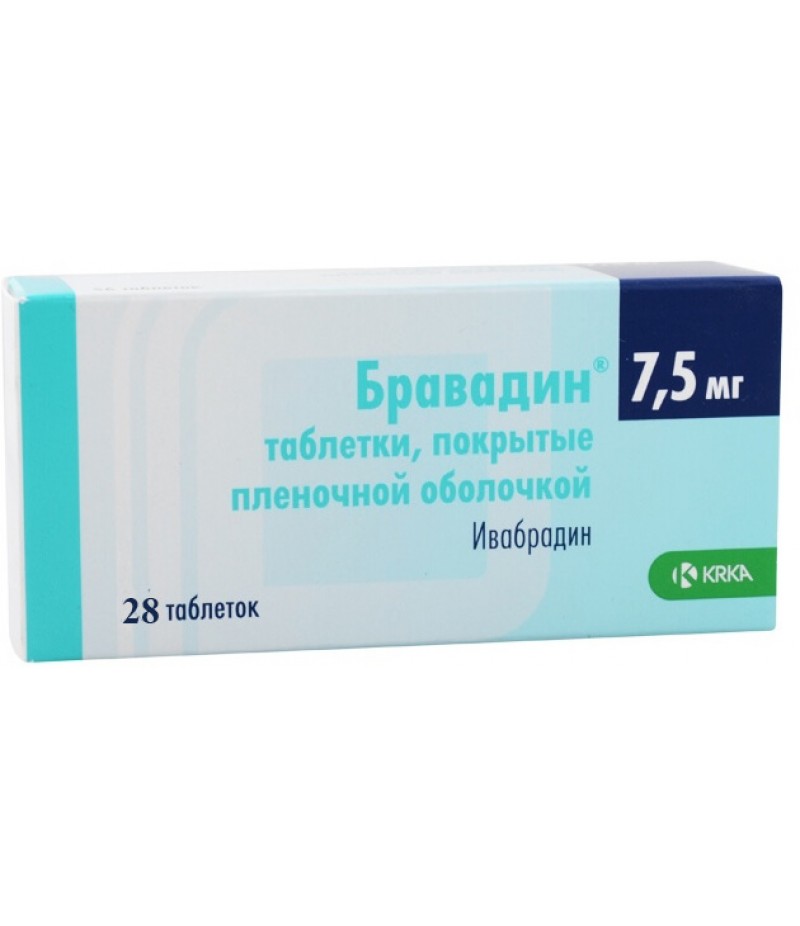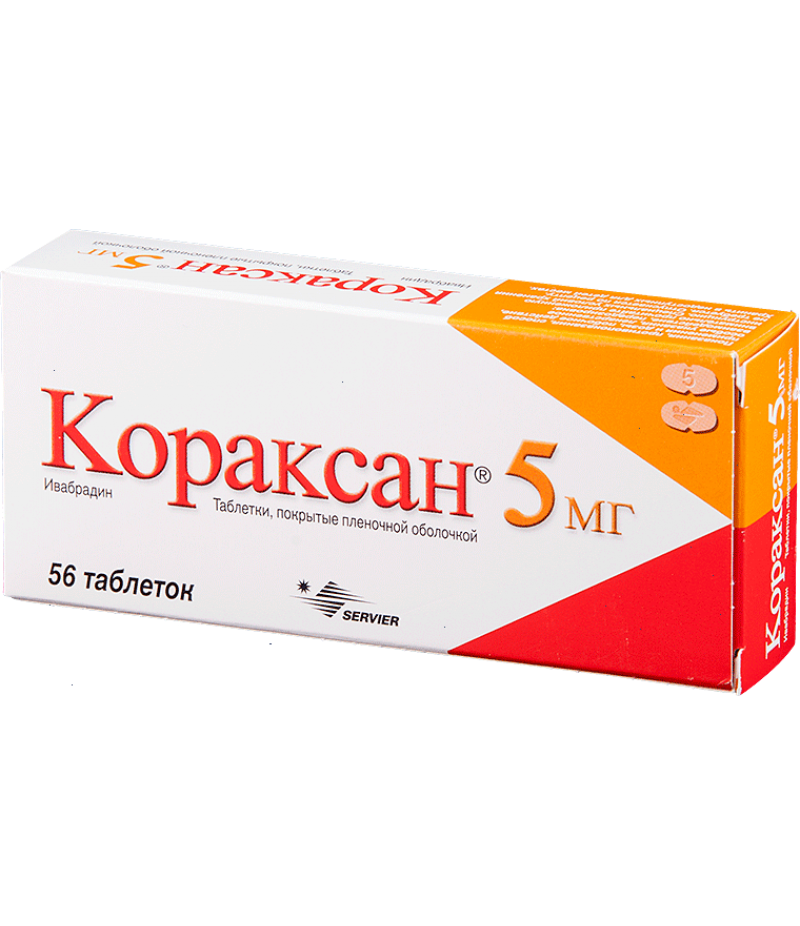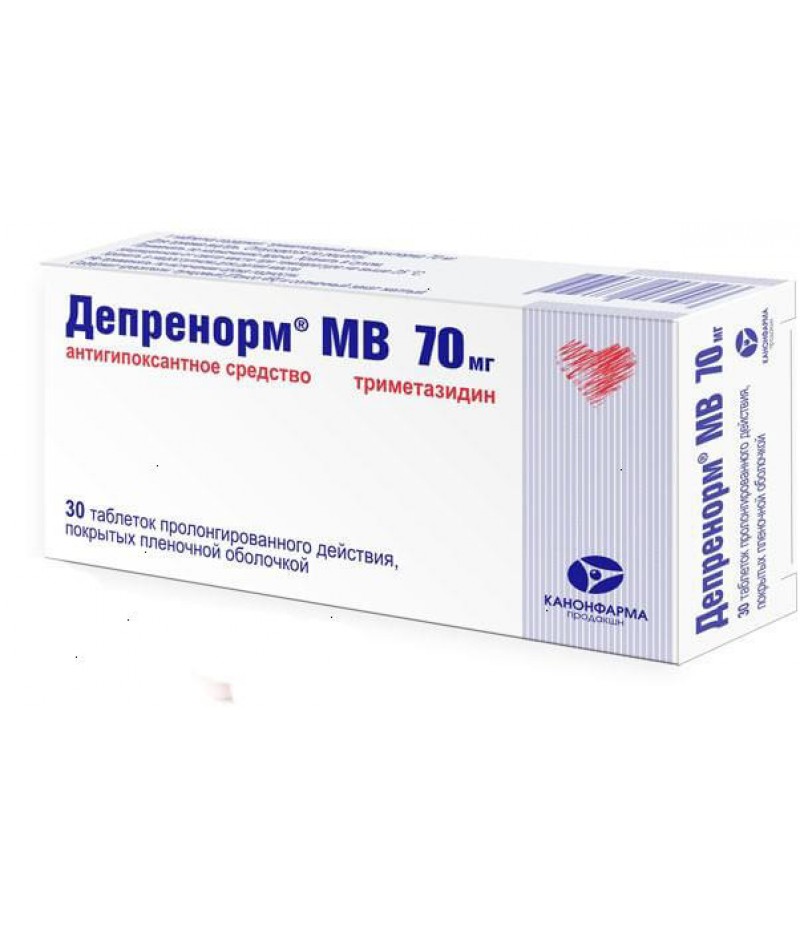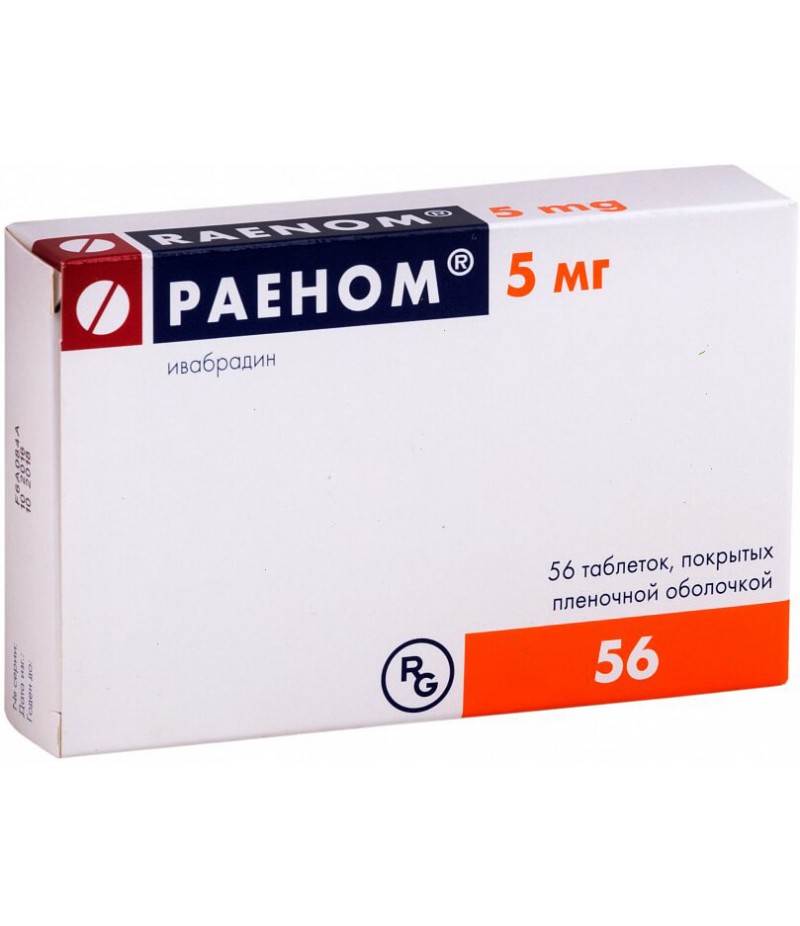Bravadin tabs 7.5mg #28
- $26.90
- 3 or more $26.65
- Availability:In Stock
Bravadin instruction for useYou can buy Bravadin herepharmachologic effectIvabradine is a drug that slows the rhythm of the heart, the mechanism of action of which is the selective and specific inhibi
Tags: tabs
Bravadin instruction for use
You can buy Bravadin here
pharmachologic effect
Ivabradine is a drug that slows the rhythm of the heart, the mechanism of action of which is the selective and specific inhibition of the If channels of the sinus node, which controls spontaneous diastolic depolarization of the sinus node and regulates the heart rate (HR). Ivabradine has a selective effect on the sinus node, without affecting the duration of the impulses along the atrial, atrioventricular and intraventricular pathways, as well as myocardial contractility and ventricular repolarization. Ivabradine can also interact with the Ih retinal channels, similar to If channels of the heart, which are involved in the occurrence of a temporary change in the visual perception system due to a change in the response of the retina to bright light stimuli. In provoking conditions (a sharp change in the brightness of the illumination), partial inhibition of the Ivabradine Ih channel occurs, which causes a transient change in brightness in a limited area of the visual field (photopsia). The main pharmacodynamic property of ivabradine is dose-dependent decrease in heart rate. Analysis of the dependence of the HR reduction on the dose of ivabradine was carried out with a gradual increase in dose to 20 mg twice a day and revealed a tendency to achieve a “plateau” effect, when there is no increase in the therapeutic effect with a further increase in dose, which reduces the risk of developing severe bradycardia (HR 40 beats / min).
At recommended doses, the decrease in heart rate is about 10-15 beats / min at rest and during exercise. This leads to a decrease in the load on the myocardium due to a decrease in the oxygen demand of the myocardium. Ivabradine does not affect intracardiac conduction, myocardial contractility (no negative inotropic action) or ventricular repolarization:
- In electrophysiological studies, Ivabradine did not affect the time of the impulses along the atrioventricular or intraventricular pathways, as well as the corrected QT interval;
- in patients with left ventricular dysfunction (left ventricular ejection fraction (LVEF) from 30 to 45%), ivabradine did not adversely affect LVEF.
Bravadin, indications for use
1. Stable angina.
Treatment of stable angina in adult patients with normal sinus rhythm:
- with intolerance or contraindications to the use of beta-blockers;
- in combination with beta-blockers with inadequate control of stable angina against the background of the optimal dose of beta-blockers.
2. Chronic heart failure.
To reduce the incidence of cardiovascular complications (mortality from cardiovascular diseases and hospitalization due to increased symptoms of chronic heart failure (CHF)) in patients with CHF, with sinus rhythm and heart rate of at least 70 beats / min.
Contraindications
- Hypersensitivity to ivabradine or any of the auxiliary components of the drug Bravadin;
- bradycardia (heart rate at rest less than 60 beats / min (before the start of treatment));
- cardiogenic shock;
- acute myocardial infarction;
- severe hypotension (systolic blood pressure (BP) less than 90 mm Hg and diastolic blood pressure less than 50 mm Hg);
- severe liver failure (more than 9 points on the Child-Pugh scale);
- Sick sinus syndrome;
- sinoatrial block;
- unstable or acute heart failure;
- the presence of an artificial pacemaker operating in the mode of constant stimulation;
- unstable angina;
- atrioventricular block (AV) of III degree;
- simultaneous use with strong inhibitors of isoenzymes of the cytochrome P450 ZA4 system, such as antifungal agents of the azoles group (ketoconazole, itraconazole), macrolide antibiotics (clarithromycin, erythromycin for oral administration, josamycin, telithromycin), HIV protease inhibitors (nfyrfurine (nfp, antiphiomycin, lipophilicase, zythromycin, telithromycin), inhibitors of synthesis of anti-inflammatory drugs (clarithromycin, erythromycin for oral administration, jyamycin, telithromycin), inhibitors of synthesis of anti-bacteria and nefazodone;
- pregnancy and breastfeeding;
- age up to 18 years (the effectiveness and safety of Bravadin in this age group has not been studied);
- Lactase deficiency, lactose intolerance, glucose-galactose malabsorption syndrome.
With caution: moderately severe liver failure (less than 9 points on the Child-Pugh scale), severe renal failure (QA less than 15 ml / min), congenital lengthening of the QT interval, simultaneous use of drugs (LS), prolonging the QT interval, simultaneous use of moderate inhibitors and inducers of CYP3A4 isoenzyme and grapefruit juice, asymptomatic left ventricular dysfunction, AV block II, recently suffered a stroke, retinal pigment degeneration (arterial hypotension, CHF IV function NYHA classification, simultaneous use with “slow” calcium channel blockers (BCCA), which reduce heart rate (verapamil or diltiazem), simultaneous use with non-calcium-sparing diuretics.
Dosage and administration
Inside, twice a day (morning and evening) during the meal.
1. Stable angina:
The recommended initial dose is 10 mg per day (1 tablet 5 mg twice a day).
After 3-4 weeks of therapy, the dose may be increased to 15 mg per day (1 tablet of 7.5 mg twice a day), depending on the therapeutic effect.
If during the use of Bravadin, the heart rate is less than 50 beats / min, or the patient has symptoms associated with bradycardia (dizziness, increased fatigue or a pronounced decrease in blood pressure), the dose of the drug Bravadin should be reduced to 2.5 mg (1 / 2 tablets of 5 mg twice a day.
Therapy with Bravadin should be discontinued if, at a lower dose of the drug Bravadin, the heart rate remains below 50 beats / min or the symptoms of severe bradycardia persist.
2. Chronic heart failure:
The recommended initial dose is 10 mg per day (1 tablet 5 mg twice a day).
After 2 weeks of therapy, the dose may be increased to 15 mg per day (1 tablet of 7.5 mg twice a day), if the heart rate is at rest more stable than 60 beats / min, or reduced to 2.5 mg (1 / 2 tablets of 5 mg twice a day, if the heart rate is consistently less than 50 beats / min or the patient has symptoms associated with bradycardia (dizziness, increased fatigue or a pronounced decrease in blood pressure). If the value of the heart rate is in the range of 50-60 beats / min, it is recommended to use the drug Bravadin at a dose of 5 mg twice a day.
If during the use of Bravadin, the heart rate at rest decreases to less than 50 beats / min or the patient has symptoms associated with bradycardia, for patients receiving the drug Bravadin 5 mg twice a day or 7.5 mg twice a day, The dose of the drug should be reduced.
If patients receiving Bravadin at a dose of 2.5 mg (1/2 tablet 5 mg) twice a day or 5 mg twice a day, the heart rate at rest is stable above 60 beats / min, the dose of the drug Bravadin can be increased.
If the heart rate is less than 50 beats per minute or the patient has symptoms associated with bradycardia, treatment with Bravadin should be stopped.
Patients over 75 years old:
Patients aged 75 years and older should begin treatment with a lower dose. The recommended starting dose is 2.5 mg (1/2 tablet 5 mg) twice a day. In the future, the dose may be increased.
Renal impairment:
Patients with impaired renal function (CC more than 15 ml / min) do not require dose adjustment.
The recommended initial dose is 10 mg per day (1 tablet 5 mg twice a day). After 3-4 weeks of therapy, the dose may be increased to 15 mg per day (1 tablet of 7.5 mg twice a day).
In connection with the lack of clinical data, Bravadin should be used with caution in patients with QA less than 15 ml / min.
Liver dysfunction:
Dose adjustment is not required in patients with mild liver failure (up to 7 points on the Child-Pugh scale). Care should be taken when using the drug Bravadin in patients with moderate hepatic insufficiency (7-9 points on the Child-Pugh scale).
For patients with severe liver failure (more than 9 points on the Child-Pugh scale), the use of Bravadin is contraindicated.
Children and teenagers:
The safety and efficacy of ivabradine in children and adolescents under the age of 18 years have not been established.
Use during pregnancy and lactation
Pregnancy.
Animal studies have demonstrated the presence of reproductive toxicity, embryotoxicity and teratogenic action.
Bravadin is contraindicated for use in pregnancy due to insufficient amount of safety data.
Breastfeeding period.
The use of Bravadin during breastfeeding is contraindicated. It is not known whether ivabradine passes into breast milk.
If necessary, the use of Bravadin during lactation breastfeeding should be discontinued.
Side effects
The use of ivabradine has been studied in clinical studies involving almost 14,000 patients. The most common side effects were dose-dependent in nature and were associated with the mechanism of action of ivabradine.
Classification of the incidence of side effects of the World Health Organization (WHO):
very often ≥1 / 10
often from ≥1 / 100 to rarely from ≥1 / 1000 to rarely from ≥1 / 10000 to very rarely from frequency unknown cannot be estimated based on the available data.
In each group, unwanted effects are presented in order of decreasing severity.
- Violations by the organ of vision:
very often: a change in light perception (photopsy) *;
often: blurred vision.
- Violations of the organ of hearing and labyrinth disorders:
infrequently: vertigo.
- Violations of the heart and blood vessels:
often: uncontrolled blood pressure, bradycardia **, AV block I degree (prolonged PQ interval on the electrocardiogram (ECG)), ventricular premature beats;
infrequently: palpitations, supraventricular extrasystole, marked reduction in blood pressure, possibly associated with bradycardia;
very rarely: atrial fibrillation, AV block II and III degree, sick sinus syndrome.
- Nervous system disorders:
often: headache (especially in the first month of therapy), dizziness, possibly associated with bradycardia;
frequency unknown: syncope, possibly associated with bradycardia.
- Violations of the respiratory system, organs of the chest and mediastinum:
infrequently: shortness of breath.
- Violations of the skin and subcutaneous tissues:
infrequently: angioedema, skin rash; seldom: pruritus, erythema, urticaria.
- Violations of the gastrointestinal tract:
infrequently: nausea, constipation, diarrhea.
- Disorders of the musculoskeletal and connective tissue:
infrequently: muscle cramps.
- General disorders and disorders at the site of administration:
infrequently: asthenia, fatigue, possibly associated with bradycardia; seldom: malaise, possibly associated with bradycardia.
- Laboratory and instrumental data:
infrequently: hyperuricemia, eosinophilia, increased plasma creatinine concentration, prolongation of the QT interval on the ECG.
* A change in light perception (photopsia) was noted in 14.5% of patients and was described as a transient change in brightness in a limited area of the visual field. As a rule, such phenomena were provoked by a sharp change in the intensity of illumination in the zone of the visual field. In general, photopsia appeared in the first two months of therapy, followed by repetition. The severity of photopsia, as a rule, was mild or moderate. Photopsia was stopped with continued therapy (77.5% of cases) or after its completion. In less than 1% of patients, the appearance of photopsia was the reason for refusing therapy.
** Bradycardia was observed in 3.3% of patients, especially in the first 2-3 months of therapy, 0.5% of patients developed severe bradycardia with a heart rate less than or equal to 40 beats / min.
special instructions
Heart rhythm disorders.
Bravadin is ineffective in the treatment or prevention of arrhythmias, its effectiveness decreases when tachyarrhythmias occur (for example, ventricular or supraventricular tachycardia). The use of the drug Bravadin is not recommended in patients with atrial fibrillation (atrial fibrillation) or other types of arrhythmias associated with the function of the sinus node.
When using Bravadin, it is recommended to conduct clinical monitoring of patients for atrial fibrillation (paroxysmal or permanent form), including an ECG study with clinical indications (for example, worsening of angina, heart palpitations, irregular heart rhythm).
The risk of developing atrial fibrillation may increase in patients with CHF who take the drug Bravadin. Atrial fibrillation was more common among patients who were simultaneously taking ivabradine with amiodarone or class I antiarrhythmic drugs.
Patients with CHF and disorders of intraventricular conduction (blockade of the left or right bundle of the bundle of His) and ventricular dyssynchrony should be closely monitored.
AV blockade II degree.
The use of Bravadin is not recommended in patients with AV block II degree.
Use in patients with bradycardia.
The use of Bravadin is contraindicated in patients with heart rate less than 60 beats / min at rest before starting therapy.
If during the use of Bravadin, the heart rate at rest decreases to less than 50 beats / min or the patient has symptoms associated with bradycardia (dizziness, increased fatigue or a pronounced decrease in blood pressure), the dose of the drug must be reduced.
Interaction
Pharmacodynamic interaction:
Simultaneous use is not recommended:
Drugs that extend the QT interval:
- antiarrhythmic drugs that prolong the QT interval (for example, quinidine, disopyramide, bepridil, sotalol, ibutilide, amiodarone);
- drugs that extend the QT interval, not related to antiarrhythmic drugs (for example, pimozide, ziprasidone, sertindol, mefloquine, halofantrine, pentamidine, cisapride, erythromycin for intravenous administration). Simultaneous use of ivabradine and drugs that extend the QT interval is not recommended, since a decrease in heart rate may cause an additional lengthening of the QT interval. If necessary, simultaneous use requires careful ECG monitoring.
Simultaneous use requiring caution:
- Nekalisberegajushchie diuretics (thiazide and "loop")
Hypokalemia may increase the risk of arrhythmia. Since the use of ivabradine can cause bradycardia, the combination of hypokalemia and bradycardia is a predisposing factor for the development of a severe form of arrhythmia, especially in patients with long QT syndrome, both congenital and caused by the use of drugs.
Pharmacokinetic interaction:
Cytochrome P450 ZA4 (CYP3A4 isoenzyme)
Ivabradine is metabolized in the liver with the participation of only the CYP3A4 isoenzyme and is a very weak inhibitor of this cytochrome. Does not affect the metabolism and plasma concentration of other substrates (strong, moderate and weak inhibitors) of the CYP3A4 isoenzyme. Inhibitors and inducers of the CYP3A4 isoenzyme can interact with ivabradine and have a clinically significant effect on its metabolism and pharmacokinetic properties. Inhibitors of the isoenzyme CYP3A4 increase, and inducers of the isoenzyme CYP3A4 reduce the concentration of ivabradine in the blood plasma. Increasing plasma plasma levels of ivabradine may cause a risk of developing severe bradycardia (see the Special Instructions section).
Simultaneous use is contraindicated:
Concurrent use with strong inhibitors of CYP3A4 isoenzyme, such as antifungal agents of the azoles group (ketoconazole, itraconazole), macrolide antibiotics (clarithromycin, erythromycin for oral administration, josamycin, telithromycin), inhibitors of HIV protease (non-voluminavir, and a non-fungal therapy, antiviral inhibitors (jar) see section "Contraindications"). Strong inhibitors of the isoenzyme CYP3A4 - ketoconazole (200 mg once a day) or josamycin (1 g twice a day) increase the average concentration of ivabradine in the blood plasma 7-8 times.
Overdose
Symptoms:
An overdose of Bravadin can lead to severe and prolonged bradycardia.
Treatment:
Treatment of severe bradycardia is symptomatic and should be carried out in conditions of specialized departments of the hospital. In the case of a combination of bradycardia with impaired hemodynamic parameters, beta-adrenomimetic drugs (isoprenaline) are necessary. If necessary, install an artificial pacemaker.
Terms of sell
You don't need a prescription to buy Bravadin.





